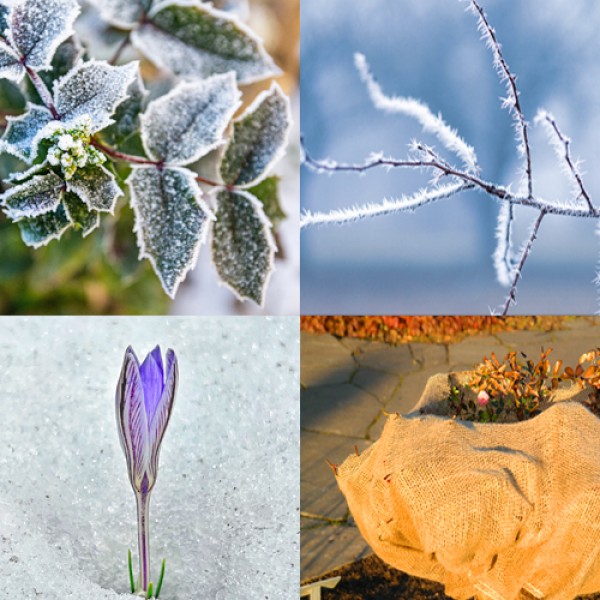
Winterrising the garden
When the temperatures in winter jump back and forth between freezing cold and spring-like 15°C, it is a real endurance test for perennial plants.
That`s when gardeners have to step up and protect their plants:
Bare frost:
At sub-zero temperatures without snow cover, we speak of bare frost. Only really hardy plants can survive this. All other plants need a warming cover, such as brushwood, jute or leaves. Even hardy plants that are cultivated in pots need protection now, as the soil in the pots can quickly freeze through, threatening to kill the roots.
Snow:
A layer of snow will protect plants from extremely cold temperatures. However, evergreen bushes and trees should be freed from the snow load, because otherwise there is a risk of branch breakage. You should also avoid walking on a lawn with a layer of snow, as well as when there is hoarfrost or freezing temperatures.
Frost at night, warm during the day:
These typical conditions in late fall or early spring literally put pressure on plants, especially in spring. Tension builds up in the tissue, which can lead to cracks. Hardy deciduous shrubs are particularly at risk here. These must then be protected from the sun`s rays during the day with shade nets or straw mats.
There is also a risk of frost-dryness if the plants - especially evergreens and potted plants - are not watered sufficiently.
Temperatures > 0°C:
Now evergreen plants need to be watered regularly. Basically, it is advisable to water on frost-free days even in winter when there is not enough rain. If new shoots are already appearing, but there is a threat of further frost, these plants must be protected with leaves or brushwood.
Temperatures > 10°C:
Unusually warm periods in winter are becoming more common in recent years. When well-wrapped but frost-sensitive plants are in the garden, they begin to sweat on warm days. This can lead to mold if left for a long time. If it stays warm longer, they may start sprouting much too early and freeze to death when the frost returns. Therefore, on warm days, the plants must be freed from their cover. But do not stow away the protection, because when the cold weather comes again, the plants need the protection even more.











